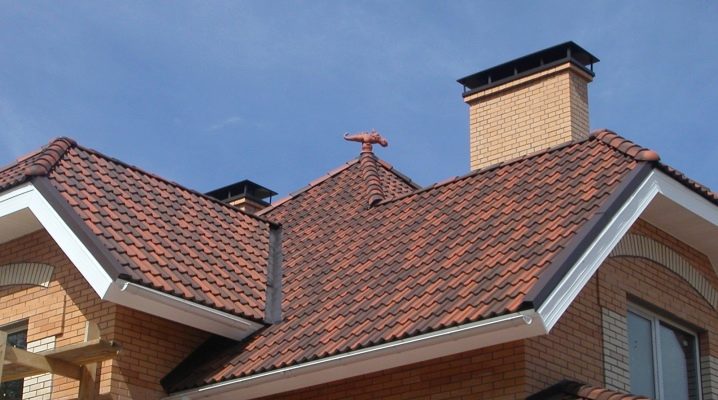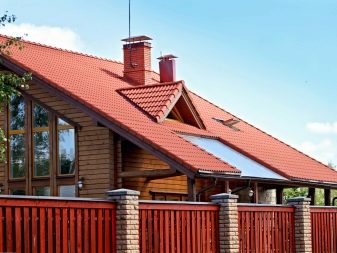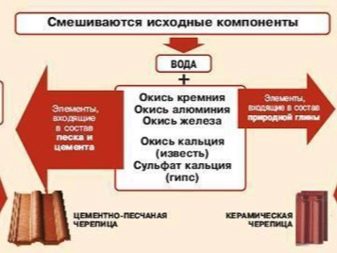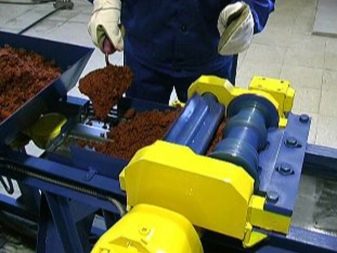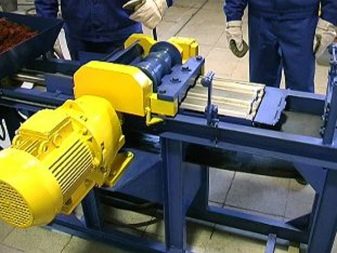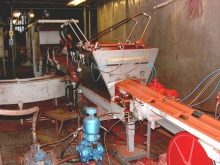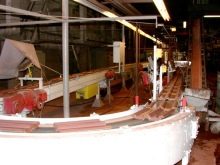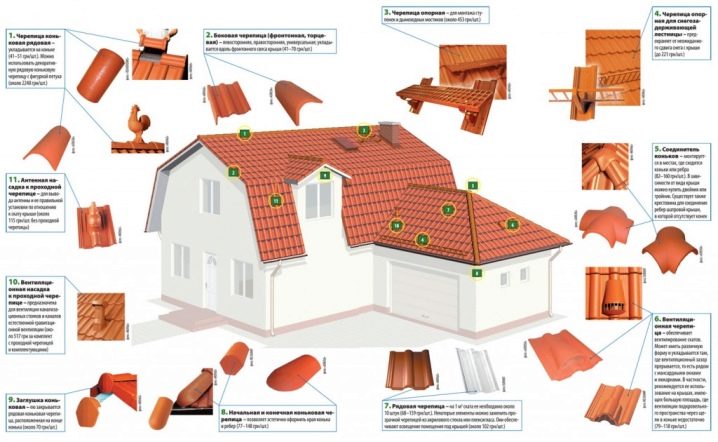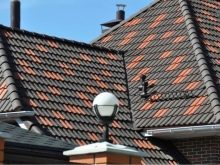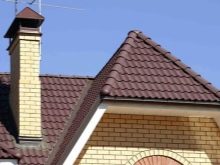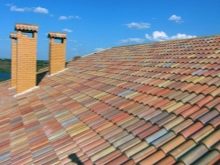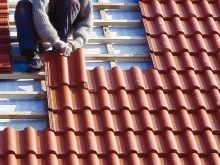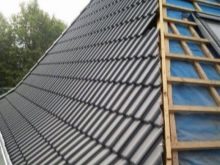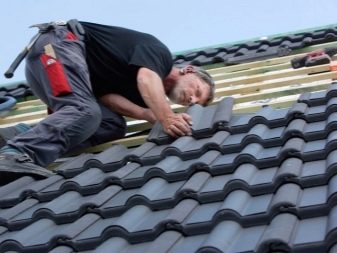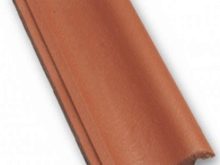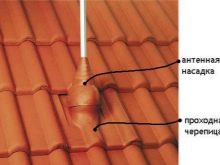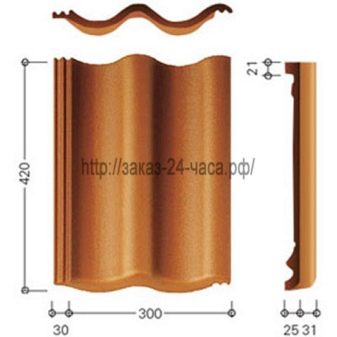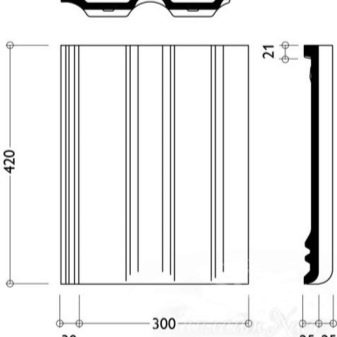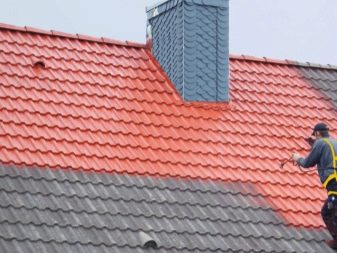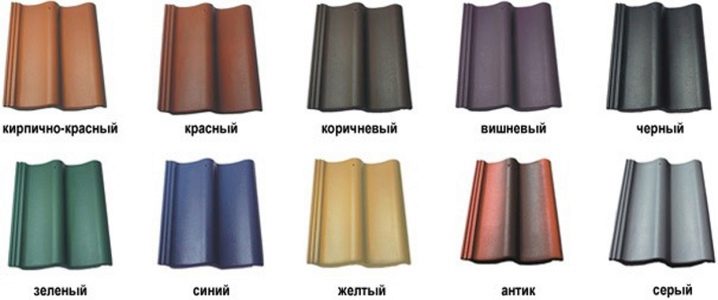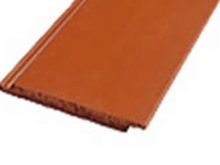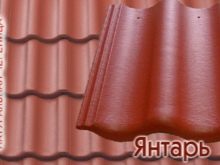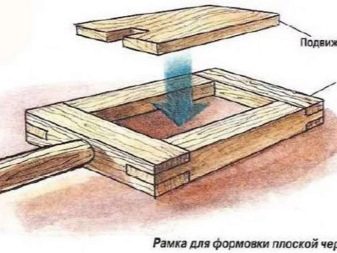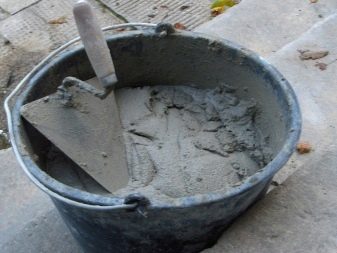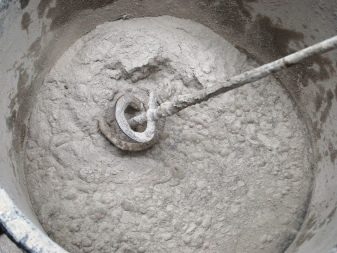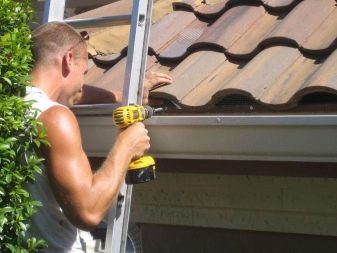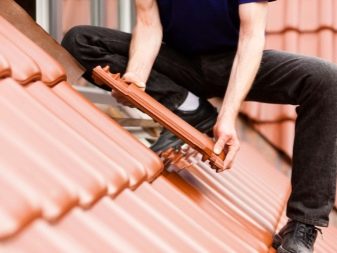Cement-sand tile: the pros and cons
The quality and durability of the structure directly depends on the choice of roofing material. The modern market offers the buyer a lot of solutions, against which cement-sand tiles are especially popular. This article will tell you about the pros and cons of this material, as well as the features of its production.
Production features
The cement and sand tile is analog of ceramic roofing material. She has an external resemblance to him. It is produced from a mixture of quartz sand, cement, binders and water-repellent additives, as well as a coloring pigment. In the production of used mainly high-quality raw materials. Usually it is cement from 200 and above.
The production technology is somewhat different from the manufacture of ceramic counterpart. It does not provide for roasting bars, which reduces the cost of the final raw materials. In the process of mixing sand, water and various additives are added to the cement. Knead the components in proportions to obtain the desired characteristics of the finished lining. To increase the strength and reliability, remove harmful impurities from the composition.
Usually for such a composition, river sand is used, in which there can be small stone inclusions up to 2 mm in diameter. After mixing to a homogeneous mass, the solution is poured into special forms. Elements are formed, pressed and dried under the conditions provided by the technology. The process of forming the material takes about 12 hours. During this time, roofing raw materials acquire the necessary qualities.
A continuous profile is formed from the finished solution using a machine. Then the machine independently cuts it into the necessary fragments. In the future, a primer coat is applied to each of them automatically. After the soil dries, the material goes on sale.
The structure of the bars can have several elements.The main lock can be single, double and triple. It is necessary to eliminate the blowing of the roof. Side locks securely interlock the bars with each other, prevent the flow of water. They can be lower and covering.
Strengthening ribs are necessary to withstand splits of tile material. The edges of the CHR are distinguished by a rounded shape. This ensures running off of water. The form provides for the presence of hooks for mounting on the batten. There is a point of contact between the slats and bars.
Specifications
Consider the basic parameters of cement-sand tiles based on its strengths and weaknesses. Pros and cons will allow to give a correct assessment of the roofing material, taking into account the views of experts.
We note the main advantages of cement-sand tiles.
- It is durable. If the material is made with strict adherence to technology, it will serve for 30 - 50 years.
- It is characterized by resistance to external factors. It does not collapse under the action of rain, snow, hail, does not fade under the sun.
- The material is resistant to significant mechanical loads. It is durable enough. The risk of spalling during installation is minimal.Repair work can be carried out directly on the CHR.
- It has a reasonable price. Even with a large amount of material does not "hit" the budget.
- Sand cement tile frost. It withstands low temperatures and is suitable for use in harsh regions.
- The material is variable in shape and size. The buyer has the opportunity to choose raw materials, taking into account its purpose and a certain place of the roof.
- HRC is environmentally friendly. It does not rot and is not deformed, and also differs in high rates of heat and noise insulation.
- It is convenient and easy to install. In this case, the material is harmoniously combined with the buildings of timber or brick.
- This roofing material does not rust, has sufficient thickness and reasonable cost. It is also durable in bending and fire resistant.
It is worth noting a few drawbacks of cement-sand tiles.
- Despite the different purpose, the main fragments do not differ a large variety of forms. Manufacturing technology does not significantly diversify the range of models of products.
- The HRC is heavy. It increases the load on the bearing and foundation. For this reason, the structure must be made of very strong building material.
- With resistance to mechanical loads, the material does not withstand the special blows. It is impossible to put broken parts: this can cause roof leaks.
- CHP is small-piece raw material. The presence of parts of different functionality transforms the installation process into a long laying out of a mosaic.
- The surface of the cladding is rough. This complicates the gathering of snow and makes you think through the roof truss system.
Sizes and shapes
Sand cement tiles are divided into two types of products: basic and finishing. The first is used for the main flooring of the roof. The second is used to close the joints.
The form of the CHR is divided into 9 types.
- Private. It has a wavy shape, is used on straight planes for installation in the form of straight rows.
- Gable The lateral tile in the form of a letter G. It happens left-sided, right-sided, universal. Required for roof ends.
- Half-hearted. Complements the laying of ordinary fragments where it is necessary to close a small empty area. Eliminates the wizard from the need to trim raw materials.
- Passage. A separate fragment of a narrow shape with a hole. Required for mounting mounting auxiliary pipes on the roof.
- Foot rest. Allows you to fix the grill, which allows safe movement from top to bottom to maintain the roof.
- Ventilation. A small fragment with a protrusion and masked grille. Promotes air circulation in the area of the valley, on the ridge or in the area of the eaves. Eliminates the formation of condensate.
- Reference. It is irreplaceable in places of installation of snow retaining barriers. Differs in special reliability in comparison with line. Warns a sharp gathering of ice.
- Ridge. Divided into 2 varieties: initial and final.
- Face. Gives completeness to the general appearance of the roof. Closes all visible joints.
The size of the CHR depends on its shape. For example, the standard dimensions of a half variety are 42 x 18 cm. The parameters of the base material are 42x33 and 41x24 cm. In the first case, per 1 square meter. m usually leaves about 10 pcs. With the parameters of 41x24 per 1 square. m facing will need 15 bars.
Colors and coloring
Initially, this roofing material had an unremarkable grayish color. But now due to new technologies it has become possible to change the shade.
This is carried out in two ways:
- by staining with kneading;
- painting finished tiles.
In the first case, the dye is more stable. The color is stable over time. If during the installation process, chipping of the material is formed, it will not be evident. The variant of the second type will have to tint special composition, which can be purchased with tiles.
In the modern construction market, this roofing material is presented in different shades. This is a traditional brick color, black, brown, sandy, reddish hues. Gray color includes tones: dark, antique, economy. Red color can be dark, red-gray, brick-red, burgundy. Unusual shades include blue and green, but in each case a gray undertone is noticeable.
Popular manufacturers and reviews
To have a greater understanding of the sand-cement tiles, you can look at the products of brands, especially sought after by consumers. On the modern construction market there are a lot of Russian and foreign versions. The price depends on the impurities and color, as well as on the reputation of the brand.
Note the most popular options.
- Benders. Launches collections Carisma, Palema Brilliant, Palema Condor, Palema Exclusive.The collection includes two-wave sheets of different colors.
- Braas. Offers the attention of buyers of the line "Frankfurt", "Amber", Coppo Di Grecia. These are profiles with one and two waves.
- Sea Wave. A joint project of the Russian manufacturer with the Swedish brand Benders. Offers sheets with an inclined waveform, having high operational properties.
How to make your own hands?
Cement-sand tiles can be made independently. Production does not require large expenditures. The technology is pretty simple. You will need high-quality cement of a proven brand and sifted fine-grained river sand. In addition, you need to buy the color of the desired color and prepare clean water at room temperature.
In contrast to the factory technology, the process will be carried out not by vibration casting, but by the piece profile. For the formation of each fragment, you will have to purchase a polyurethane molding for stamping concrete. In order to properly form the sheets, a layer of concrete composition is applied on a clean metal sheet and left for a certain time. After that, tiles are cut out from the layer of raw material.
Apparatus for making roofing material in the home has a complex configuration. It includes a bowl for placing the solution, a guillotine for trimming a fragment of the desired length. There is a clear width of the profile web. A characteristic feature of home facing raw materials is the use of cement with a slow setting.
The quality of the material is affected by the way the bag is stored. A dry composition that was stored in a damp, unventilated room (this reduces the binding properties of the raw materials) will not work for this purpose. Sand and cement must be dry before kneading.
The proportions of the composition are as follows: in 1 hour of cement, add 3 hours of sand. 0.5 h of water is added to this volume. If the water is hard, you can boil it beforehand and cool it. Mixing is performed in a clean container with no traces of other materials from previous construction and installation works.
Mix the mass until the state of uniformity. If a dye is used, make sure that the solution is colored evenly. When the raw material is ready, proceed to the molding. It is laid in the form, empirically adjusted to the amount of mass.Then press on the handle and stretch to the front end of the form.
Sometimes the reciprocating motion is repeated twice. This is necessary for greater clarity of the picture. If the bar is produced with longitudinal troughs, a simple downward pressure on the punch is sufficient. Moreover, its length should be equal to the length of the form itself. The punch is capable of squeezing the desired pattern. Due to this movement, ironing of the face of the sand-cement tile is performed.
Installation Tips
In order for the installation of the roof through the CHR to be of high quality and durable, it is necessary to arm yourself with some recommendations of specialists.
- The cross section of the bar is subject to the step truss system. The smaller it is, the smaller should be the size of the CHR. The pitch parameters of the batten should be from 31 to 34.5 cm.
- Buy only the right amount of material. You can calculate it using an online program or a specialist in a specialized store. This will minimize waste.
- The overlap recommended between the tiled sheets can be from 7.5 to 10.5 cm in the upward direction.
- The minimum angle of inclination when laying roofing sheets is 22 degrees.
- Do not forget to lay steam and waterproofing before laying the roofing material, securing the free edges of the panels.
- Start laying from the bottom row. That he is the main. On it align the rest and check the level.
- When nailing material to the frame, use thin nails or cleats.
- Equip the last row with a ventilation duct. Use for this purpose bars with gaps on the edges.
- Laying of each horizontal gable end complete installation of the bar with a curved end. Make sure that the distance between the private (base) and gable tiles coincide.
- If it is necessary to cut a bar, use a grinding machine for this purpose.
- Raising the roofing material up, be extremely careful not to smash the tiles on the ground. Raise it in portions of 6 - 7 pieces.
See below for the difference between cement-sand and ceramic tiles.
